Juno JSI4362B, JSI4362S, JSI4362E Manual

Geschirrspüler
Dishwasher
JSI 4362
Gebrauchsanweisung
Instruction booklet

ENGLISH
Important safety information
It is most important that this instruction book should be retained with the appliance for future reference. Should the appliance be sold or transferred to another owner, or should you move house and leave the appliance, always ensure that the book is left with the appliance in order that the new owner can get to know the functioning of the appliance and the relevant safety information.
This information has been provided in the interest of safety. You MUST read it carefully before installing or using the appliance.
Installation
■This appliance is heavy. Care should be taken when moving it.
■It is dangerous to alter the specifications or attempt to modify this product in any way.
■Care must be taken to ensure that the appliance does not stand on the electrical supply cable.
■Any electrical work required to install this appliance should be carried out by a qualified electrician or competent person.
■Any plumbing work required to install this appliance should be carried out by a qualified plumber or competent person.
■Care should be taken when cleaning the bottom door seal and hinge area as any exposed metal edges may cut if care is not taken.
■This product should be serviced by an authorised Service engineer, and only genuine spare parts should be used.
■Under no circumstances should you attempt to repair the machine yourself. Repairs carried out by inexperienced persons may cause injury or serious malfunctioning. Contact your local Service Force Centre. Always insist on genuine spare parts.
Child Safety
■This appliance is designed to be operated by adults.
Children should not be allowed to tamper with the controls or play with the product.
■Keep all packaging well away for children.
■Keep all detergents in a safe place out of children's reach.
During Use
■Items that are contaminated by petrol, paint, steel or iron debris, corrosive, acidic or alkaline chemicals must not be washed in this dishwasher.
■Under no circumstances should you open the door whilst the appliance is in operation. Always turn off the appliance before opening the door.
■Only use detergent specifically designed for use in dishwashers.
■When finishing loading or unloading close the door, as an open door can be a hazard.
■Do not sit or stand on the open door.
■Isolate the appliance from the power supply and turn off the water supply after use.
Conservation
In the interest of the environment:
■Materials marked with the symbol  are recyclable.
are recyclable.
■Check with your local Council or Environmental Health Office to see if there are facilities in your area for re-cycling this appliance.
■When the appliance is to be scrapped, cut off the power supply cable and make the door closing device unusable to prevent young children from being trapped inside.
■Help to keep your country tidy - use authorised disposal sites for your old appliance.
26 |
PSI01GB |

Contents
For the user
Important safety information |
26 |
Guide to use the instruction book |
27 |
Description of the appliance |
28 |
The control panel |
29 |
Before use |
30 |
Setting the water softener |
30 |
Rinse aid |
32 |
Use of detergent |
33 |
Using your appliance |
34 |
Loading your appliance |
34 |
Adjusting the height of the upper basket |
35 |
Hints and tips |
36 |
Washing programmes |
37 |
Operating sequence |
38 |
Maintenance and cleaning |
39 |
Internal cleaning |
39 |
Cleaning the central filter |
39 |
Cleaning the large filter |
39 |
External cleaning |
40 |
Prolonged periods of non-operation |
40 |
Frost precautions |
40 |
Moving the machine |
40 |
Something not working |
41 |
Protection against flooding |
42 |
Service and spare parts |
42 |
For the installer
Installation instruction |
43 |
Technical specifications |
43 |
Water supply connections |
44 |
Water outlet hose connection |
45 |
Electrical connection |
45 |
Building-in |
46 |
Adjusting the height of the appliance |
46 |
The furniture door |
47 |
Fixing to the adjacent units |
48 |
Adjusting the door balance |
48 |
Kitchen plinth adjustment |
49 |
ENGLISH
Guide to use the instrucion book
The following symbols will be found in the text to guide you throughout the instructions:
Safety instructions
Step by step instructions
Hints and tips
27 |
PCO12GB |
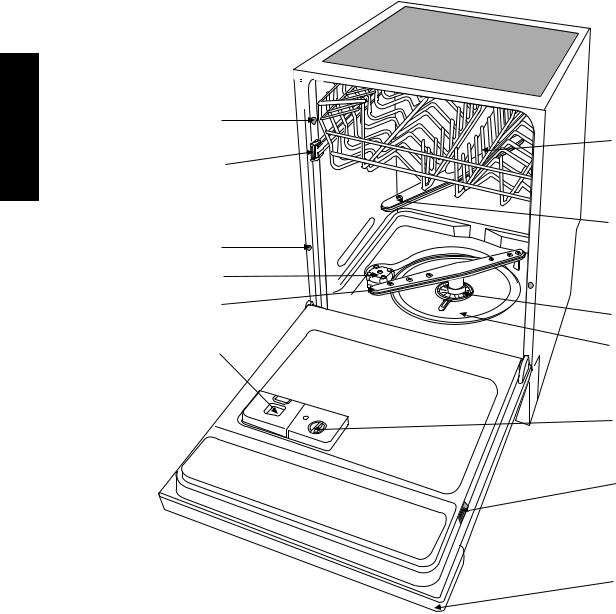
Description of the appliance
ENGLISH
1 


2 |
14 |
|
|
3 |
|
|
13 |
4 |
|
5 |
|
6 |
12 |
|
|
7 |
11 |
10
9
8
IN66
1. |
Water hardness adjustment |
10. |
Rinse aid dispenser |
2. |
Levelling spacers |
11. |
Large filter |
3. |
Upper basket stop |
12. |
Central filter |
4. |
Door balancers |
13. |
Upper spray arm |
5. |
Salt container |
14. |
Upper basket |
6.Lower spray arm
7.Detergent dispenser
8.Control panel
9.Rating plate
28 |
PDA06GB |

The control panel
ENGLISH
1 |
2 |
3 |
4 |
5 |
1.On/Off indicator light
2.On/Off pushbutton
On
By depressing this button the machine starts operating and, at the same time the On/Off indicator light illuminates.
Off
When the washing programme has finished, the machine stops automatically and the pilot light remains on.
To switch the indicator light off or to stop the machine at any time, press this button.
3. Door handle
To open the door press the catch in the top of the recess and pull the door toward you at the same time.
To close the door simply push it.
4.Programme marker
5.Programme selector dial
To select a programme, turn the programme selector dial clockwise, making sure that the programme marker is in line with the programme you wish to select.
29 |
PCP22GB |
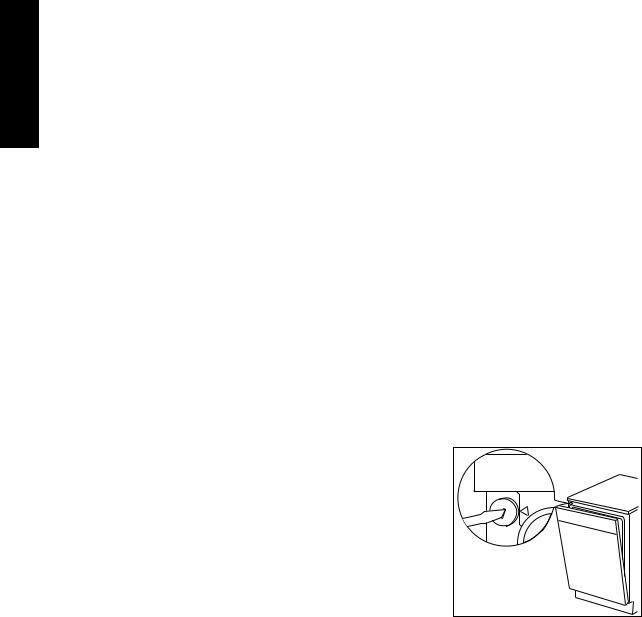
ENGLISH
Before use
Before using your dishwasher for the first time:
ensure that the electrical and water connections comply with the installation instructions
remove all packaging from inside the appliance
set the water softener
fill the salt container
fill the rinse aid dispenser.
Setting the water softener
The dishwasher is equipped with a water softener designed to remove minerals and salts from the water supply, which would have a detrimental or adverse effect on the operation of the appliance.
The higher the content of these salts, the harder your water is.
Water hardness is measured in equivalent scales, for example German, French degrees, and parts per million.
The softener should be adjusted according to the hardness of the water in your area. Your local Water Authority can advise you on the hardness of the water in your area.
The dishwasher is factory set at level 2.
If this level is not suitable for your area the softener should be adjusted.
To adjust the water softener:
With a screwdriver turn the selector on the upper front corner of the machine until the level required corresponds with the marker.
|
|
|
|
|
|
|
|
|
|
|
Water hardness |
|
|
|
|
||
|
|
|
|
|
|
|
|
|
|
|
|
|
|
|
|
|
|
|
German |
|
French |
PPM |
|
Level |
Use of |
|
|
degrees |
|
degrees |
(Parts per |
|
|||
|
|
|
|
salt |
||||
|
(°dH) |
|
(°TH) |
million) |
|
|
||
|
|
|
|
|
||||
|
|
|
|
|
|
|
|
|
<4 |
|
<7 |
0-80 |
|
0 |
NO |
||
5-11 |
|
8-20 |
81-200 |
|
1 |
SI |
||
12-22 |
|
21-40 |
201-400 |
|
2 |
SI |
||
23-34 |
|
41-60 |
401-600 |
|
3 |
SI |
||
35-50 |
|
61-90 |
601-900 |
|
4 |
SI |
||
51-67 |
|
91-120 |
901-1200 |
|
5 |
SI |
||
|
|
|
|
|
|
|
|
|
3 |
4 |
|
5 |
|
1 |
AA05 |
|
30 |
PBU01GB |
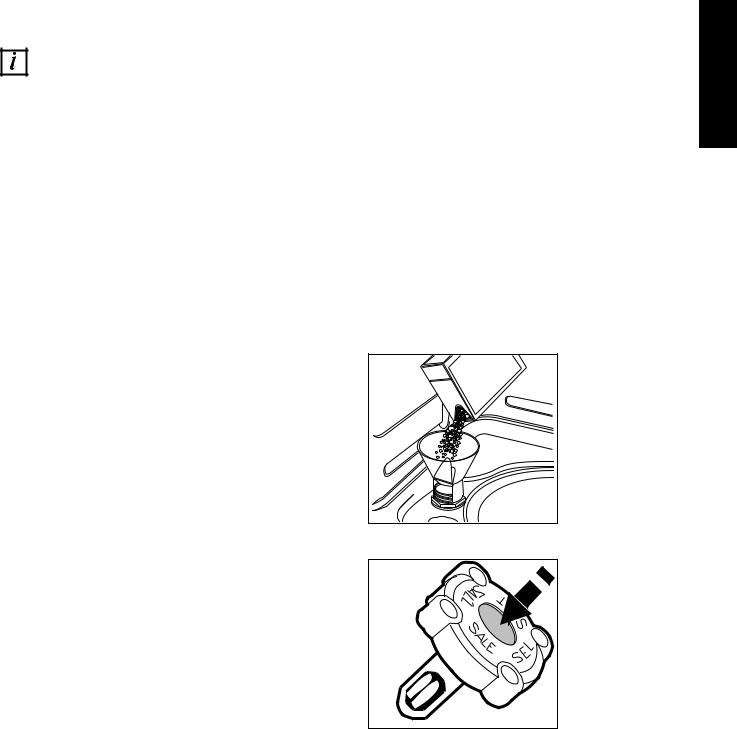
Filling with salt
If your water is "level 0" it is already soft and therefore there is no need to use salt.
Salt must be used from level 1 upward.
Only use salt specifically designed for use in dishwashers.
All other types of salt not specifically designed for use in dishwasher, specially table salt, will damage the water softener.
Only fill with salt just before starting one of the complete washing programmes (not the Rinse and Hold programme). This will prevent any grains of salt or salty water, which may have been spilled, remaining on the bottom of the machine for any period of time, which may cause corrosion.
To fill:
1.To fill with salt, unscrew the cap of the salt container.
2.Pour about 1 litre of water inside the container, or until it is full (this is necessary only before filling with salt for the first time).
3.Then using the funnel provided, pour in the salt until the container is full (approx. 1.5 - 1.8 kg).
Do not worry if water over flows from the unit when filling with salt, this is quite normal.
4.Replace the cap making sure that there is no trace of salt on the screw thread or on the gasket.
5.Screw on the cap tightly.
The salt container will require topping up periodically.
The salt cap has a refill indicator window in the centre.
A green floater is clearly visible when there is salt inside the container, and almost disappears when the salt has finished, (ie. every 30 - 50 washes depending on the setting of the water softener) reminding you to add salt.
SALET |
SAL |
SALZ |
SEL |
SR06 |
SR11 |
ENGLISH
31 |
PFS01GB |
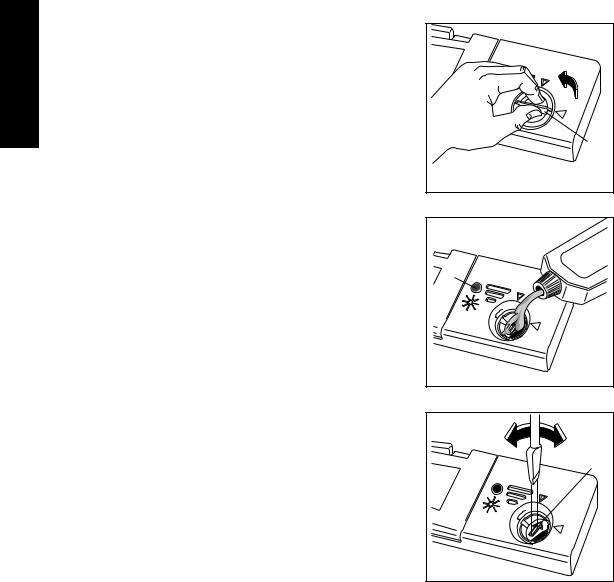
ENGLISH
Rinse aid
Rinse aid is automatically added during the last rinse, ensuring through rinsing, spot and streak free drying. The dispenser, which is positioned inside the door, holds about 110 ml of rinse aid, which is sufficient for 16 - 40 dishwashing programmes, depending upon the dosage setting.
Filling with Rinse Aid:
1.Open the container by turning the lid (A) anticlockwise.
2.Add the rinse aid until the container is completely full (approx. 110 ml). The indicator
(B)will be completely dark.
3.Top up the rinse aid when the indicator (B) becomes clear.
Ensure that the lid is closed after every refill.
Do not put liquid detergent in the rinse aid department. Clean up any rinse aid spilt during filling with an absorbent cloth to avoid excess foaming during the next wash.
Adjusting the dose
According to the finish and drying results obtained, adjust the dose of rinse aid by means of the 6 position selector (C) (position 1 minimum dosage, position 6 maximum dosage). (Start from position 3). Gradually increase the dose if there are drops of water or lime spots on the dishes after washing. Reduce it if there are sticky whitish streaks on the dishes.
A |
BR01 |
B |
|
|
|
|
|
|
x |
6 |
5 |
4 |
3 |
|
|
|
|
||
m |
a |
|
|
|
2 |
|
|
|
|
1 |
|
|
|
|
|
|
|
BR03 |
|
|
|
|
|
|
|
|
|
|
C |
|
x |
6 |
5 |
4 |
3 |
m |
a |
|
|
|
2 |
|
|
|
|
1 |
|
|
|
|
|
|
|
BR02 |
|
|
|
|
|
32 |
PFR01GB |
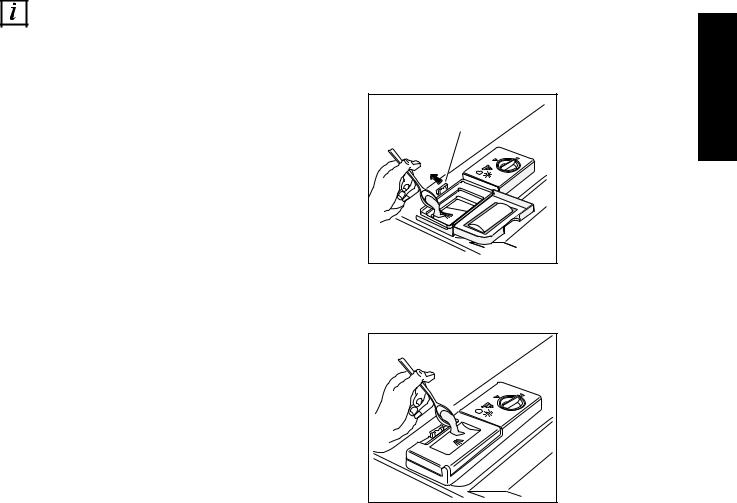
Use of detergent
Only use detergents specifically designed for use in dishwashers.
To fill the dishwasher with detergent proceed as follows:
1.Open the dispenser lid by pulling the catch (D).
2.Add the detergent according to the recommendations in the programme chart. As all detergents are not the same, you should also consult the instructions on the packet specially for tablets.
To help correctly dose the right amount of detergent, inside the container there are two reference marks:
- MIN |
= 15 ml |
- MAX |
= 30 ml |
3.Always close the lid.
4.If the programme has a prewash add the required detergent over the lid of the
dispenser.
Insufficient quantities of detergent will produce poor washing results, whereas an excessive amounts of detergent will not improve washing results and is also wasteful. Using no more than the correct amount also contributes to reducing pollution.
Phosphate free detergents with enzymes
In these low-alkaline compact powders the environment unfriendly components have been replaced by natural enzymes and other more biodegradable substances.
These new compact powders are generally phosphate-free.
As phosphates have water softening properties, we suggest you add salt to the salt container even if the hardness of your water is as low as 4°dH (7°TH).
This will avoid lime deposits on crockery and the inner tub.
D |
MAX |
MIN |
DE07 |
DE02 |
ENGLISH
33 |
PUD01GB |
